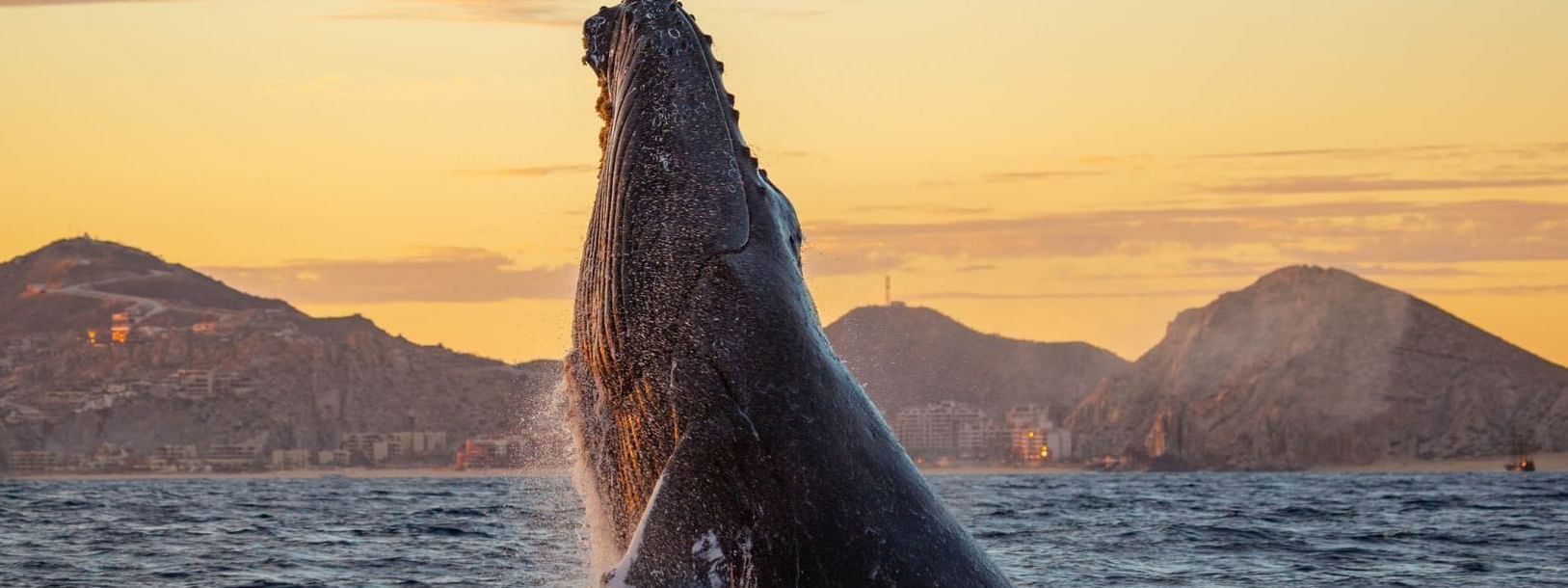Whale watching season is on
During the winter months, diverse species of whales visit the calm waters of the Sea of Cortez. It is known that whales come to mate and to give birth. For this reason, it the best time of the year to admire their magnificence and enjoy their charm. These friendly mammals make a spectacle of their jumps and flips -known as breaching and is indeed a wonderful display. Their newborns are also quite curious and they will sometimes try to have a glimpse of the boats nearby. Occasionally a couple of mothers and their “babies” can be seen playing around.
Here is the spot
In the bay of Cabo San Lucas and along its coastline is quite common to see a variety of marine life and among them, you guessed… whales! This zone is a natural passage for them to enter from the Pacific Ocean to the Gulf of California. In a short period of time, you can see a dozen geysers caused by their breath; if you are lucky enough even more. An interesting fact about whales is that some of them can travel as far as 12,000 miles (roundtrip). That’s about four times the distance between New York and Los Angeles when driving a car. Pretty impressive if you ask me, or anyone who likes swimming.
"In the bay of Cabo San Lucas and along its coastline is quite common to see a variety of marine life and among them, you guessed… whales!"
What kind of whales should I look for?
Among the different species of whales that visit this location, the most common you will see are the humpback whales, gray whales, and even killer whales who are actually more related to dolphins than whales yet that’s a topic for another time. There is one special visitor in this part of the world: the gray whale. They were once on the brink of extinction due to unmeasured hunting. However, thanks to tremendous efforts of conservation with international support, their population has slowly recovered, Though they are still considered an endangered species, their sight in our waters gives hope to all of those who love nature and those who protect it.
What else is there to see?
Even if the whales get most of the attention during the watching expeditions, there is more marine life you should look out for in these waters. Some of the front-runners are the manta rays, who love to jump out of the water and can fly as much as 6.5 feet high. They are often seen in large groups, gathering in the hundreds at times and creating quite a sight. You may also see sea lions, chilling in the rocks near our world-know Arch. Flying above or diving, you can observe pelicans and different species of seagulls.
Enjoy the show and come back soon!
If you have planned a trip to Los Cabos during the winter months, do not miss the opportunity to admire the natural world on the tip of Baja. There are few places in North America where you can enjoy breathtaking landscapes and observe its incredible biodiversity from so close. In our state, the conservation of Mother Nature is a top priority. When you take part in activities that promote ecotourism you also take part in the great effort to preserve this natural sanctuary and the wildlife that lives in it.
We share this world with fascinating creatures, give yourself the chance to appreciate them. During this whale watching season, come and experience nature like never before. - M.H.M






